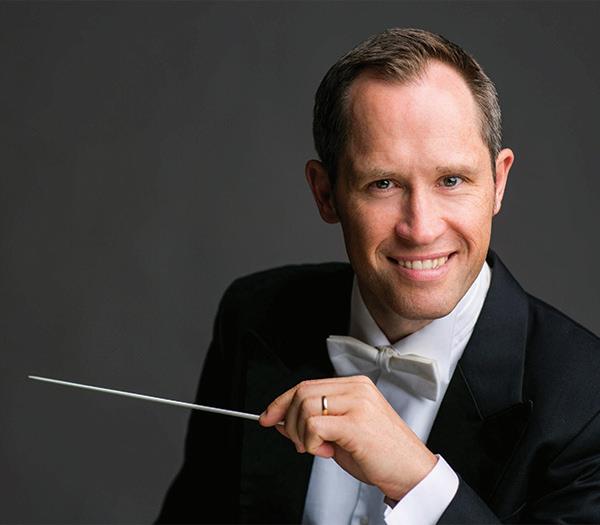
4 minute read
Looking Back, Moving Forward
1937

Advertisement
LOOKING BACK
1990



MOVING FORWARD
By Steven Stamer, Development Associate
Orchestral music in South Bend began 14 years before the inception of the South Bend Symphony Orchestra. Frederic Ingersoll, a violinist from Cleveland, Ohio, came to South Bend in 1894, after four years of study in Berlin and Switzerland. He envisioned bringing aspects of the musical life he had experienced in Europe to American cities. Ingersoll taught violin students privately in South Bend until 1906, when Milton B. Griffith established the South Bend Conservatory and hired him as faculty. By 1918, Ingersoll had been promoted to the position of director of the conservatory and utilized his pupils, as well as local musicians, to form the first professional symphony in South Bend. This symphony provided invaluable musical life to the people of South Bend and gifted local musicians an opportunity to perform. Unfortunately, in 1932, the pressures of the Great Depression forced Ingersoll’s orchestra to fold.

That same year, Australian violinist Edwyn H. Hames formed the South Bend Symphony Orchestra as a performing ensemble of his string students assisted by professional musicians. Making do with the limitations of the Depression economy, these first musicians were all volunteers who paid dues of 25 cents per week in order to afford music rentals, and they were responsible for selling tickets to every concert. The initial group consisted of 44 members, but rapid growth was on the horizon. By 1933, the orchestra had begun establishing itself in the community, with George Mauer of the South Bend Tribune remarking that “if the quality of the performance and the size and enthusiasm of the audience are criteria then the organization will be a permanent one.”
In 1935, Ella Morris took the helm as president of the Symphony and began transforming the group from its humble volunteer roots into the fully professional organization it was to become. Ella Morris organized a Women’s Committee with hundreds of volunteers to sell tickets and host events, marking a significant transition to a self-sustaining

1935
Ella Morris elected president of the Symphony and organizes the ticket sales, helping the group to become a fully professional orchestra Seymour Rubenstein named music director 1973
Herbert Butler becomes the third music director of the Symphony 1975
1982

The “Violin Woman” statue by Tuck Langland is displayed in front of the Morris Civic in celebration of 50 years of the South Bend Symphony Orchestra
1932
Edwyn H. Hames founds the South Bend Symphony Orchestra
1949
Symphony membership expands to 85 musicians
1980
The Midwest Pops merges with the South Bend Symphony Orchestra and Newton Wayland conducts the Pops series
1985
Kenneth Kiesler steps in as music director and establishes a core group of musicians to lead the Symphony to greater artistic heights
organization. A Men’s Committee, under the guidance of Ms. Morris, worked to bring in donations. Her leadership was essential for the growth of the organization into a fully professional ensemble.

By the 1940s, the membership of the Symphony exceeded 80 musicians and world-famous guest artists began performing with the group, including Arthur Rubenstein and Percy Grainger. In its first decade, the Symphony had relied on musicians from Chicago to supplement its ranks, but as time went on efforts were made to cultivate orchestra members from the local community. By the 1950s, most of the symphony consisted of local musicians. Only two-thirds of the members were professional musicians, with a significant number working full-time in local factories and companies, such as Studebaker. Throughout the 1950s and 60s, the Symphony grew and performed with increasingly renowned guest artists, such as Van Cliburn and Glenn Gould.
In 1972, Edwyn Hames conducted his final concert with the Symphony, completing a tenure of 40 years as music director. At the time, Hames had one of the longest tenures of any American conductor. A period of transition followed, with a series of guest conductors leading the Symphony in the early 1970s. Seymour Rubenstein conducted one complete season, followed by Herbert Butler, who remained in the position until his untimely death in 1982. Rubenstein and Butler’s era saw immense growth in the organization. In 1980, the Midwest Pops merged with the Symphony, and Newton Wayland conducted the Pops concerts until 1991. Wayland’s Pops concerts were known for being exceptionally engaging for audiences and musicians alike.
Kenneth Kiesler became music director in 1985 and a gift from Dr. Corey B. McFarland allowed the orchestra to increase salaries and establish a core of players, raising the artistic level of the Symphony. A series of chamber orchestra concerts with these core

Maestro Tsung Yeh takes the podium as music director
1988
1996
The first Gift of Music Gala raises $8,000 for the Symphony Alastair Willis begins his tenure as music director
2017

New logo 2015
2021
Equity, Diversity, and Inclusion Statement and Committee formed First subscription series concert to feature all African American composers
2016
The inaugural season of the Jack M. Champaigne Masterworks Series
2022
The 90th Anniversary Season features enhanced artistic programming and guest artists such as Yo-Yo Ma, Sarah Willis of the Berlin Philharmonic, and more!









